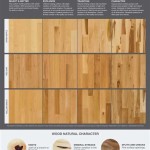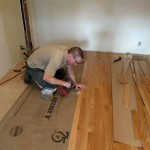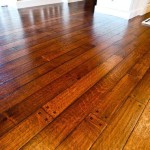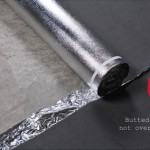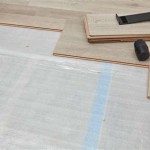Oak Flooring Cost: A Comprehensive Guide
Oak flooring is a popular choice for homeowners due to its durability, aesthetic appeal, and versatility. However, understanding the various factors that contribute to the overall oak flooring cost is crucial for effective budgeting and informed decision-making. This article provides a comprehensive overview of the elements influencing the price of oak flooring, helping readers navigate the market and make the best choice for their needs and budget.
The total cost of oak flooring is not simply the price per square foot of the material itself. It encompasses a range of expenses, including the type of oak, grade of the wood, installation costs, underlayment, and finishing. Each of these components plays a significant role in determining the final price. Ignoring any of these elements can lead to inaccurate budget estimations and potential financial surprises during the flooring project.
Furthermore, regional price variations, the complexity of the installation, and specific demands from the flooring project can all impact the final expense. A successful oak flooring project requires a thorough understanding of these details, thus allowing for a more realistic and controlled budget.
Understanding the Types of Oak and Their Costs
Oak flooring primarily comes in two varieties: red oak and white oak. Each type possesses unique characteristics that affect not only its appearance but also its price point. Red oak, characterized by its reddish hue and prominent grain pattern, is generally more readily available and, therefore, typically less expensive than white oak. Its open grain structure can be more absorbent, making it slightly less resistant to moisture compared to white oak.
White oak, on the other hand, has a tighter grain and a lighter, more neutral color. Its closed grain structure makes it more resistant to water damage and decay. This added durability and desirability often translate to a higher price tag. White oak's natural water resistance also makes it a suitable option for kitchens and bathrooms, where moisture exposure is a common concern.
Beyond red and white oak, variations in sawing methods also influence the cost. Plain-sawn oak, the most common and cost-effective cutting method, produces a cathedral grain pattern. Rift-sawn oak, cut perpendicular to the growth rings, results in a linear grain pattern and is more stable than plain-sawn, thus carrying a higher price. Quarter-sawn oak, cut at a 45-degree angle to the growth rings, displays a unique ray and fleck pattern and boasts even greater stability, making it the most expensive of the three sawing methods.
The choice between red and white oak, as well as the chosen sawing method, will significantly influence the material cost. Careful consideration of these factors, based on aesthetic preferences, desired durability, and budgetary constraints, is essential in the initial planning stages.
Oak Flooring Grade and Its Impact on Price
Oak flooring is graded based on its appearance and the presence of imperfections such as knots, mineral streaks, and color variations. Higher grades exhibit fewer imperfections and a more uniform appearance, thus commanding a premium price. Lower grades, with more character marks, are typically more affordable.
Clear grade oak is the highest quality, featuring minimal knots and color variation. This grade provides a clean and consistent look, ideal for modern and minimalist designs. Select grade oak also exhibits minimal imperfections but may have slightly more color variation than clear grade. Common grade oak, also known as character grade, features more knots, mineral streaks, and color variations. This grade offers a rustic and natural look, often preferred for farmhouse or traditional styles.
The grade of oak does not necessarily reflect its structural integrity. Even lower grades are perfectly sound and durable. The grade primarily affects the aesthetic appeal and the consistency of the finished floor. Choosing a lower grade can significantly reduce material costs, particularly for those who appreciate the natural character of the wood. However, it is important to inspect the planks carefully before installation to ensure any imperfections are deemed acceptable.
When factoring in the grade of the oak to be used, understand that the amount of waste created increases as lower grade oak is selected. More cuts will need to be made during installation to avoid or remove undesirable characteristics, which could impact the amount of flooring to order.
Consideration should also be given to the type of finish that will be applied to the floor. A transparent finish will highlight the variations present in lower grade options, while a solid color finish can help to obscure and minimize color and grain variations.
Installation Costs and Related Expenses
Installation costs represent a significant portion of the overall oak flooring expense. These costs can vary depending on the complexity of the installation, the condition of the subfloor, and the labor rates in the particular geographic area. Professional installation ensures proper acclimation of the wood, precise fitting, and correct fastening methods, all of which contribute to the longevity and performance of the floor. However, professional installation comes at a price.
The type of oak flooring also plays a role in installation costs. Solid oak flooring, which is typically thicker and requires nailing or gluing down, generally costs more to install than engineered oak flooring, which can often be floated or clicked together. Engineered oak flooring consists of a thin layer of real oak veneer bonded to a plywood or composite core, making it more stable and less susceptible to warping or expansion due to moisture.
Subfloor preparation is another factor that influences installation costs. A level and stable subfloor is crucial for a successful flooring installation. If the existing subfloor is uneven, damaged, or requires leveling, additional costs will be incurred for the necessary repairs. These repairs may include patching cracks, filling holes, or installing a self-leveling compound.
Additional expenses associated with oak flooring installation include the cost of underlayment, which provides cushioning, sound insulation, and moisture protection. The cost of trim and moldings, such as baseboards, quarter rounds, and stair nosing, should also be factored in. These elements are essential for creating a clean and finished look, but they add to the overall project cost.
When comparing installation quotes, it is imperative to obtain detailed breakdowns of the costs involved. This will allow for a comprehensive assessment of the value proposition and ensure that all necessary tasks are included in the estimate. It is important to consider the experience and reputation of the flooring contractor. A skilled installer can ensure a quality installation that will enhance the beauty and longevity of an oak floor.
Depending on the existing flooring, removal and disposal costs may also need to be considered. These costs can be higher for materials such as tile or resilient flooring, which may require more labor-intensive removal processes.
Finishing costs present another important factor to consider. Pre-finished oak flooring is a cost-effective option, as the finishing process is already included in the purchase price. However, unfinished oak flooring allows for customization of the stain and finish, offering greater design flexibility. The cost of finishing unfinished oak flooring includes the cost of sanding, staining, and applying several coats of sealant, which can add to the overall expense.
When selecting the finishing product, water-based and oil-based options present alternatives with their respective benefits and drawbacks. Water-based finishes are more environmentally friendly and dry faster, while oil-based finishes offer enhanced durability and a richer, more amber hue. Understanding the properties of each type of finish leads to a more informed decision that aligns with budget considerations.
Maintenance of oak flooring is an additional cost that must be taken into account. Proper cleaning products, such as pH-neutral cleaners, must be used to avoid damage to the finish. Regularly sweeping and vacuuming will help prevent scratches and wear. Over time, the finish may require re-coating and some damage could warrant professional repair.

Cost Of Installing White Oak Flooring Three Trees

Average Hardwood Flooring S In 2024 Forbes Home

Solid Wood Flooring S Cost

How Much Does Wooden Floor Installation Cost In 2024 Mybuilder Com

Wooden Flooring Cost Guide 2024 How Much For Wood Floors

Engineered Timber Flooring Cost In Sydney Updated 2024 Floorvenue

How Much Does Hardwood Flooring Cost 2024 Guide

2024 Oak Flooring Cost Installation Options Remodeling Calculator

How Much Should Wooden Flooring Cost In 2024 Checkatrade

How Much Do Hardwood Floors Cost Why Hardwoodfloor
Related Posts

